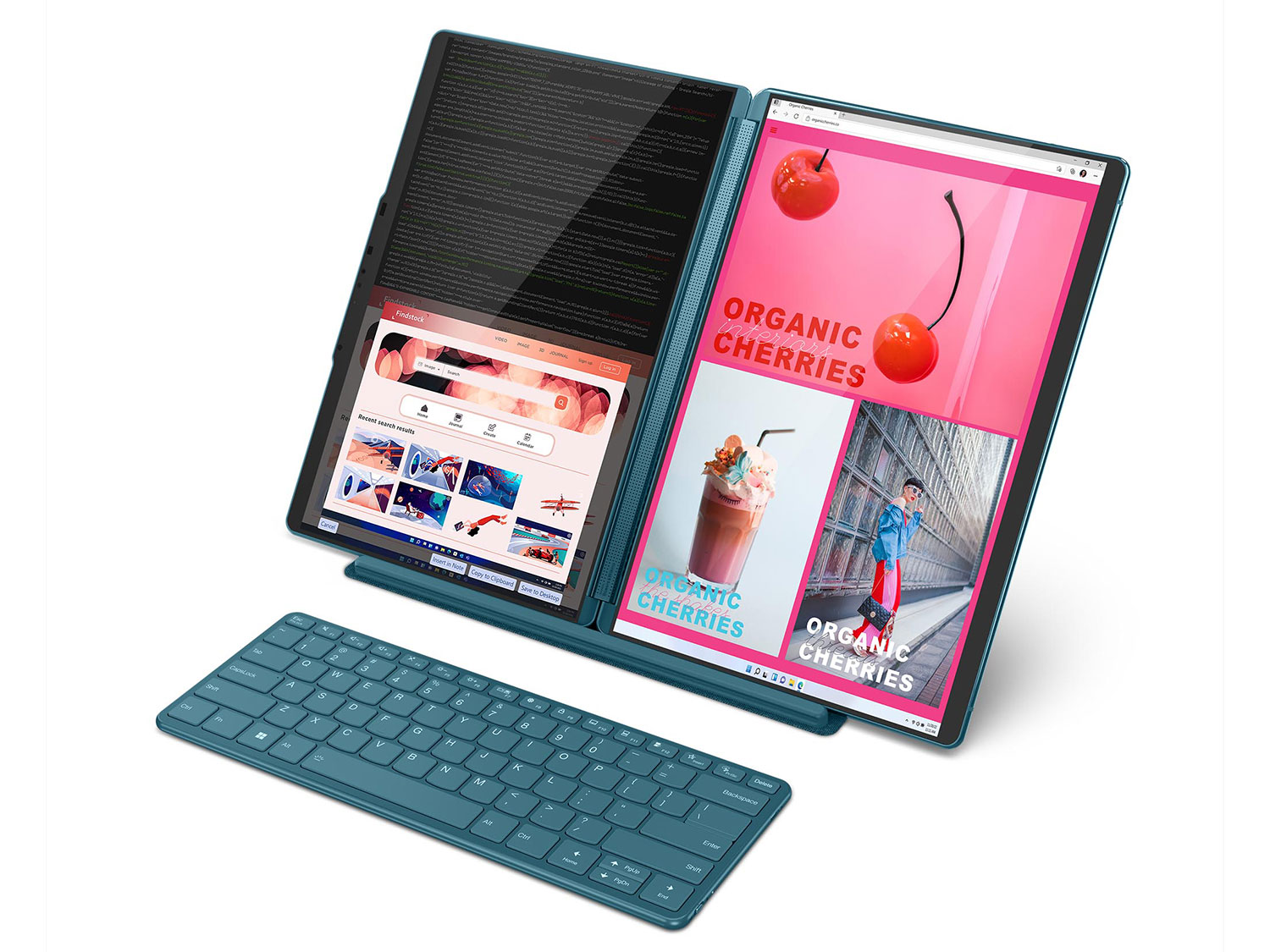 Over the years, laptops have seen enormous evolutions cycles, and each overcame specific struggles. First, it was the size and weight. Then the ongoing computing power, display quality, battery longevity, etc. What a journey it has been, and with the new Lenovo YogaBook 9i, we’re onto the next challenge: increasing total display surface area.
Over the years, laptops have seen enormous evolutions cycles, and each overcame specific struggles. First, it was the size and weight. Then the ongoing computing power, display quality, battery longevity, etc. What a journey it has been, and with the new Lenovo YogaBook 9i, we’re onto the next challenge: increasing total display surface area.
Modern laptops have outgrown the screen space allocated to them in many ways. Many people, including us at Ubergizmo, use laptops as primary computers. At the very least, there’s a whole group of power users who use them as such during business trips. Until now, mobile displays such as the ThinkVision 14M have been one of the best options one has.
We’ve all been frustrated at some point by the cramped display real estate we have, and even a 16 or 17-inch display isn’t enough. Additionally, the horizontal aspect ratio of most laptops is not conducive to the best productivity, which often requires more vertical screen space.
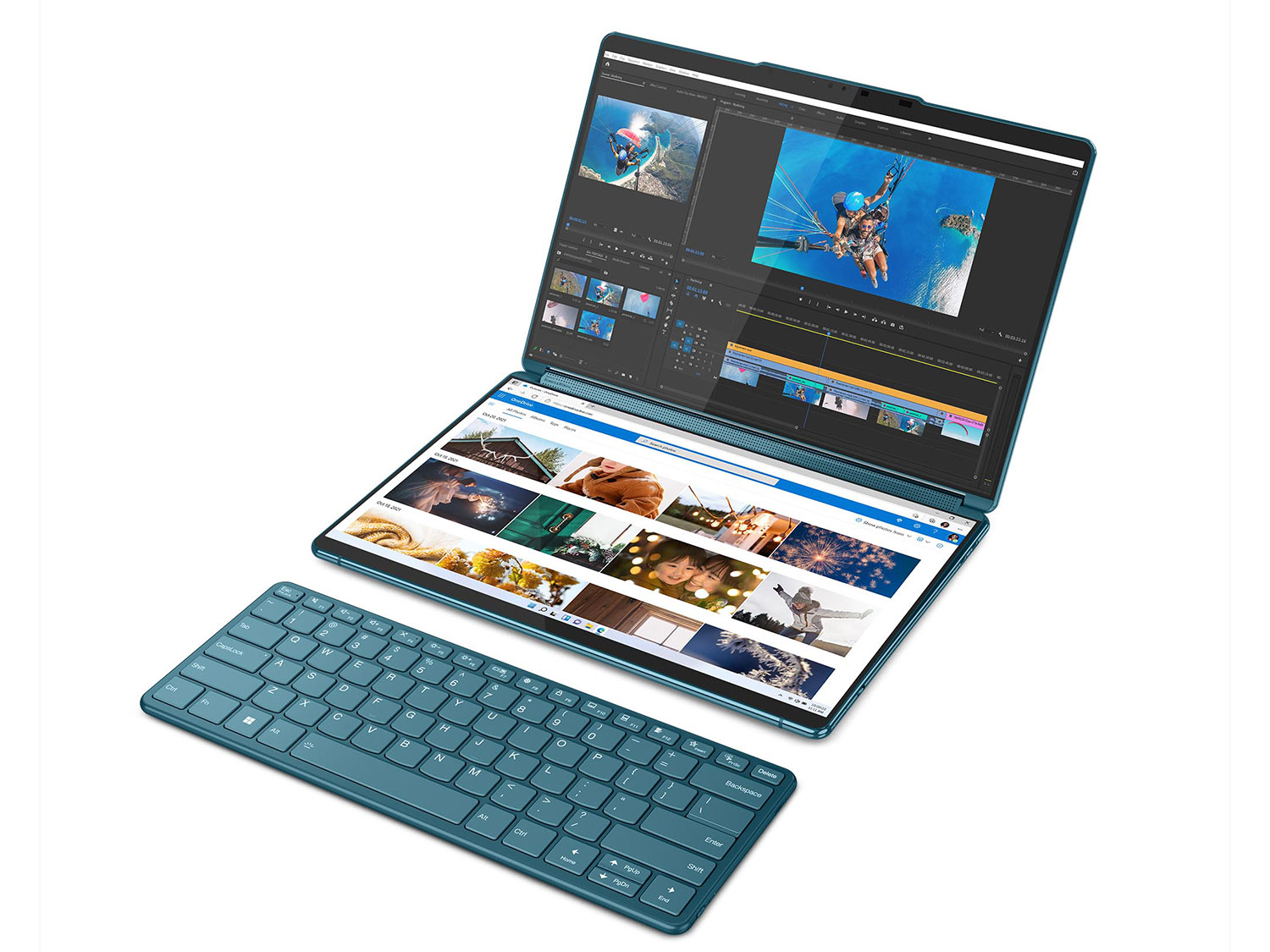
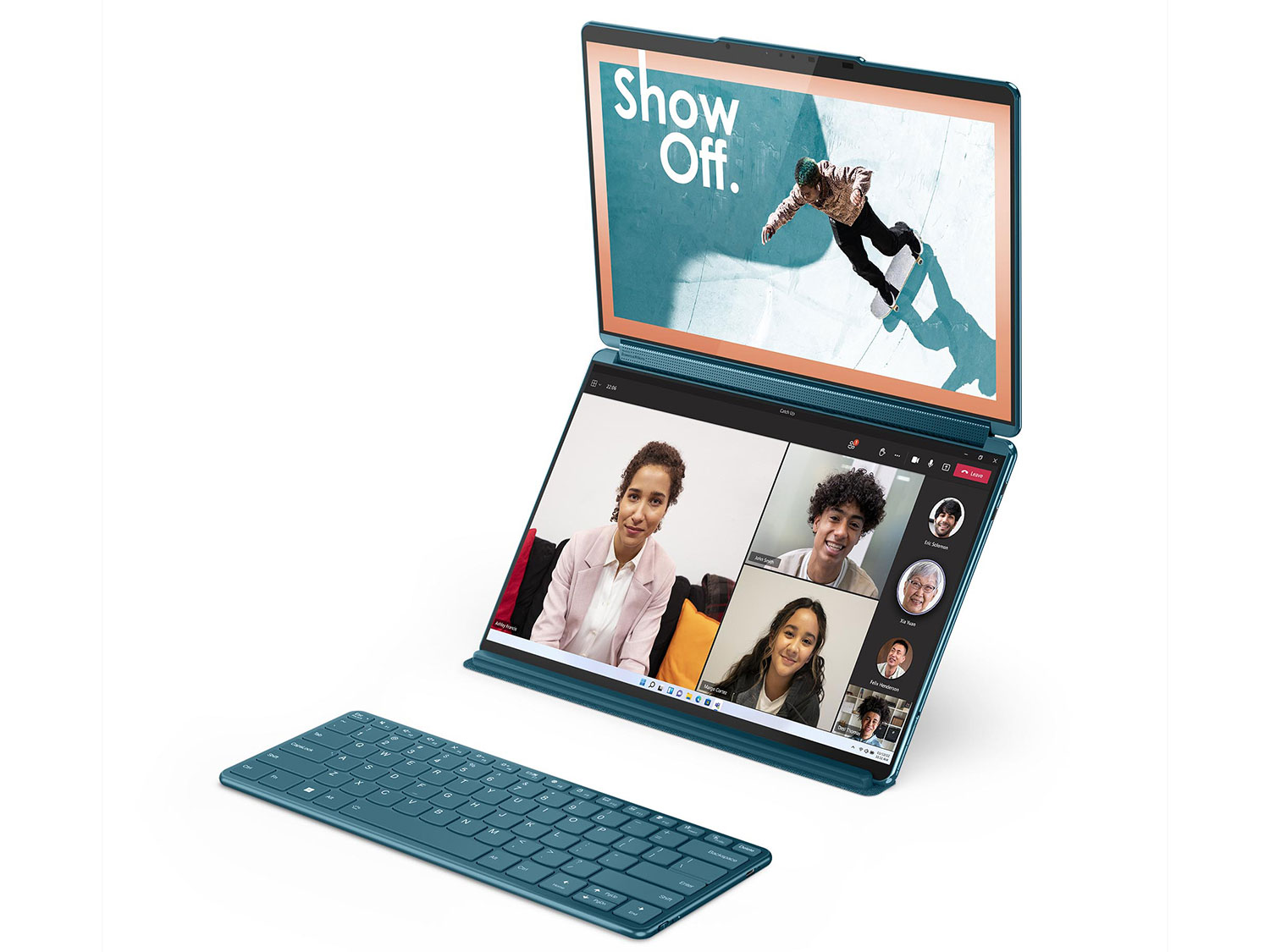
The new Lenovo YogaBook 9i is designed to significantly reduce this pain point by integrating two display panels. The two 13.3” 2.8K OLED displays bring seriously more Windows desktop real estate and expand the vertical space available to your documents or code, thus boosting your productivity.
Although you may have seen concept laptops like this before, Lenovo is the first company to offer a commercial product.
I like both the 2.8K resolution and the OLED technology choices. For productivity work, these ensure excellent visual comfort and image quality. You can use the laptop as a dual monitor with two panels side by side or on top of each other. Lenovo includes a foldable stand that takes up minimal space.
You might switch between these two positions depending on your webcam location preference. The Webcam has an FHD resolution and an IR sensor for securely logging in using face identification. There’s a privacy shutter when you don’t use it.
From a technical standpoint, the 60Hz OLED displays have a 400 NITs brightness, which is more than your average thin & light. They cover 100% of the DCI-P3 color gamut, which will please photographers and designers. Finally, there’s a Dolby Vision certification.
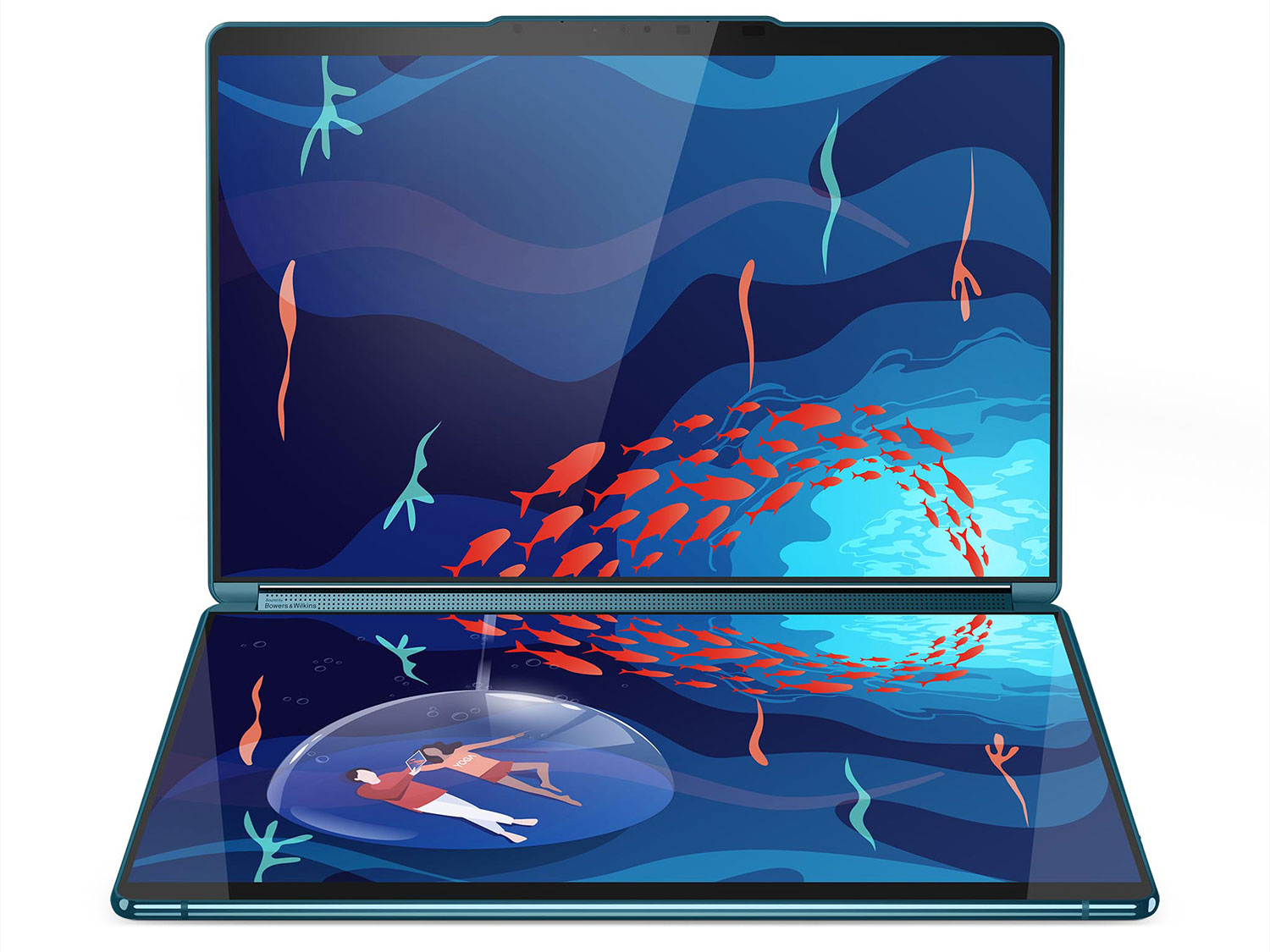
Alternatively, you can use the laptop in clamshell mode with a virtual keyboard. Can PC users transition from physical keyboards to virtual ones, as we did with phones? It partially depends on the keyboard app’s quality, but at the very least, it should perform as it does for large tablets.
In clamshell mode, the included ePen is remarkably comfortable, and that’s a potentially formidable way to sketch on one screen while having tools, etc., on the other. We’ll have to try it long-term, but this seems extremely promising for Creative users.
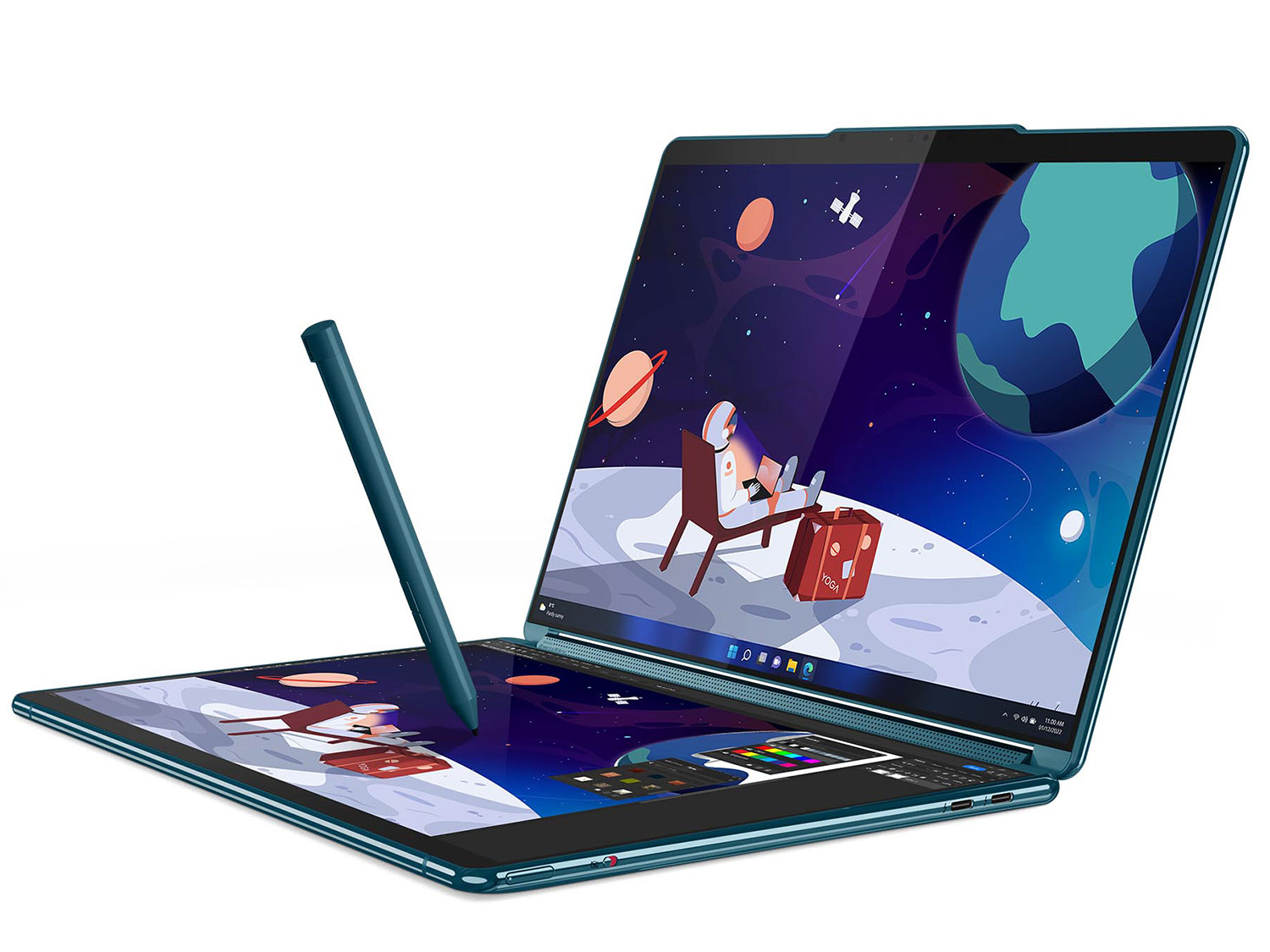
Lenovo included Pen gestures. If you go from the bottom-left corner towards the center, a screenshot will be captured, and you can create annotations on it immediately. That sure beats the default Windows screenshots or apps like Greenshot.
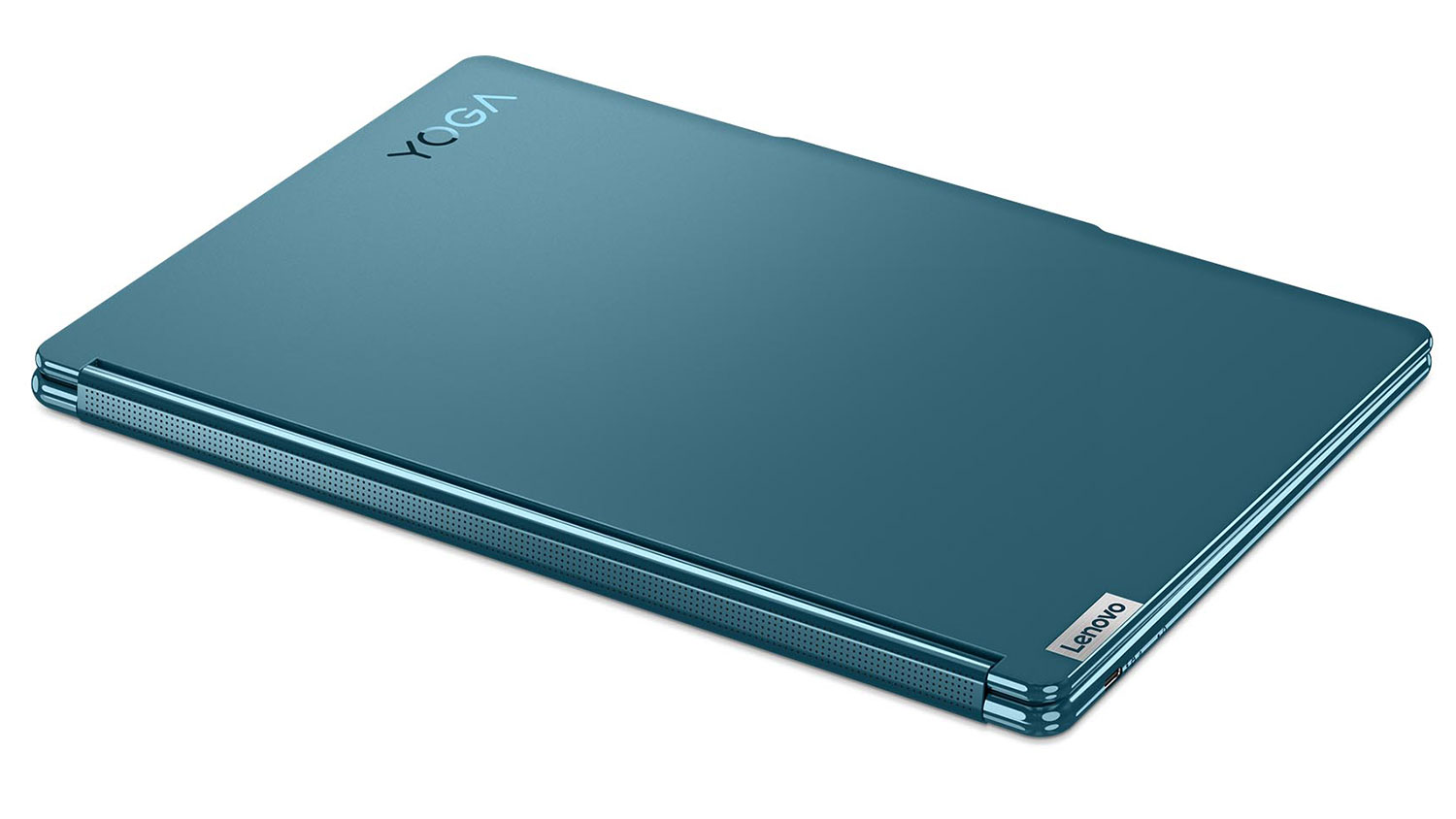
When closed, the YogaBook 9i looks like an ordinary laptop and occupies a standard footprint (minus the included keyboard). Lenovo even included their 2x 2W + 2x 1W Bowers & Wilkins soundbar, one of the industry’s best speaker designs.
The dual-screen setup should work like a regular two-monitor system from Window’s point of view. However, Lenovo has added extra software to make things even more convenient. If you touch one screen with five fingers, the current Window will expand to both screens and take up all the available space.
An eight-finger touch will make the virtual keyboard appear. Above the virtual keyboard, you can display Windows Widgets to show information you care about. Like Lenovo’s ThinkPad X1 Fold, you can put your physical keyboard on top of the bottom touch screen and still see the Widgets.
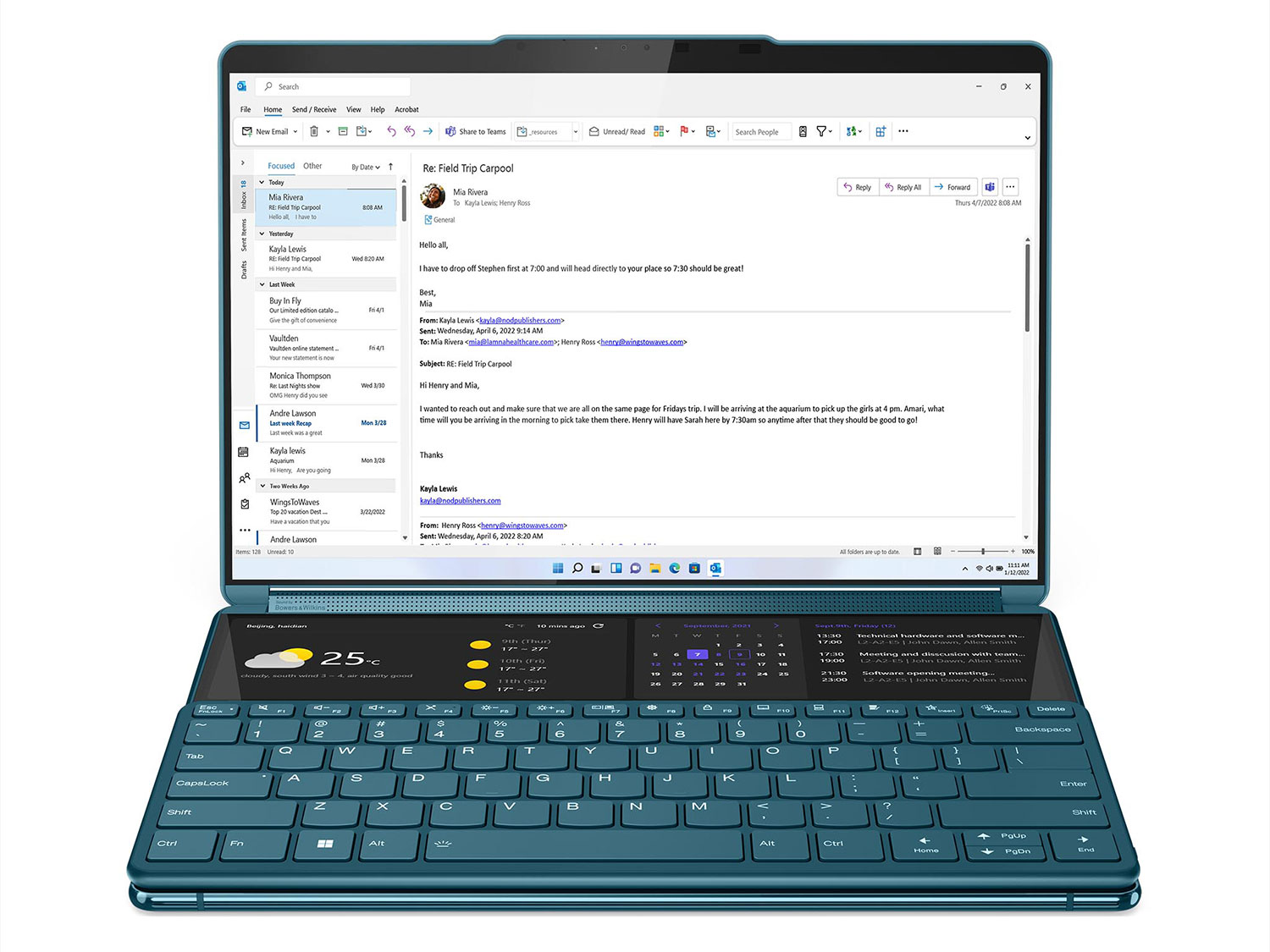
The laptop is powered by an Intel Core i7 U-series CPU (U stands for Ultra-low-power) paired with 16GB of RAM. Buyers can choose 512GB or 1T SSD (PCIe Gen4). Lenovo included a large 80 Whr battery to support the large display surface area, and we can tell the overall system power was balanced to provide a relatively normal battery life.
Still, having two screens will take a toll on the battery life, and Lenovo says that you should expect ~7 hours of use with two screens but ~14 hours with a single screen. The U-series processors are more optimized for power than raw performance, so we’ll keep an eye on the benchmark numbers.
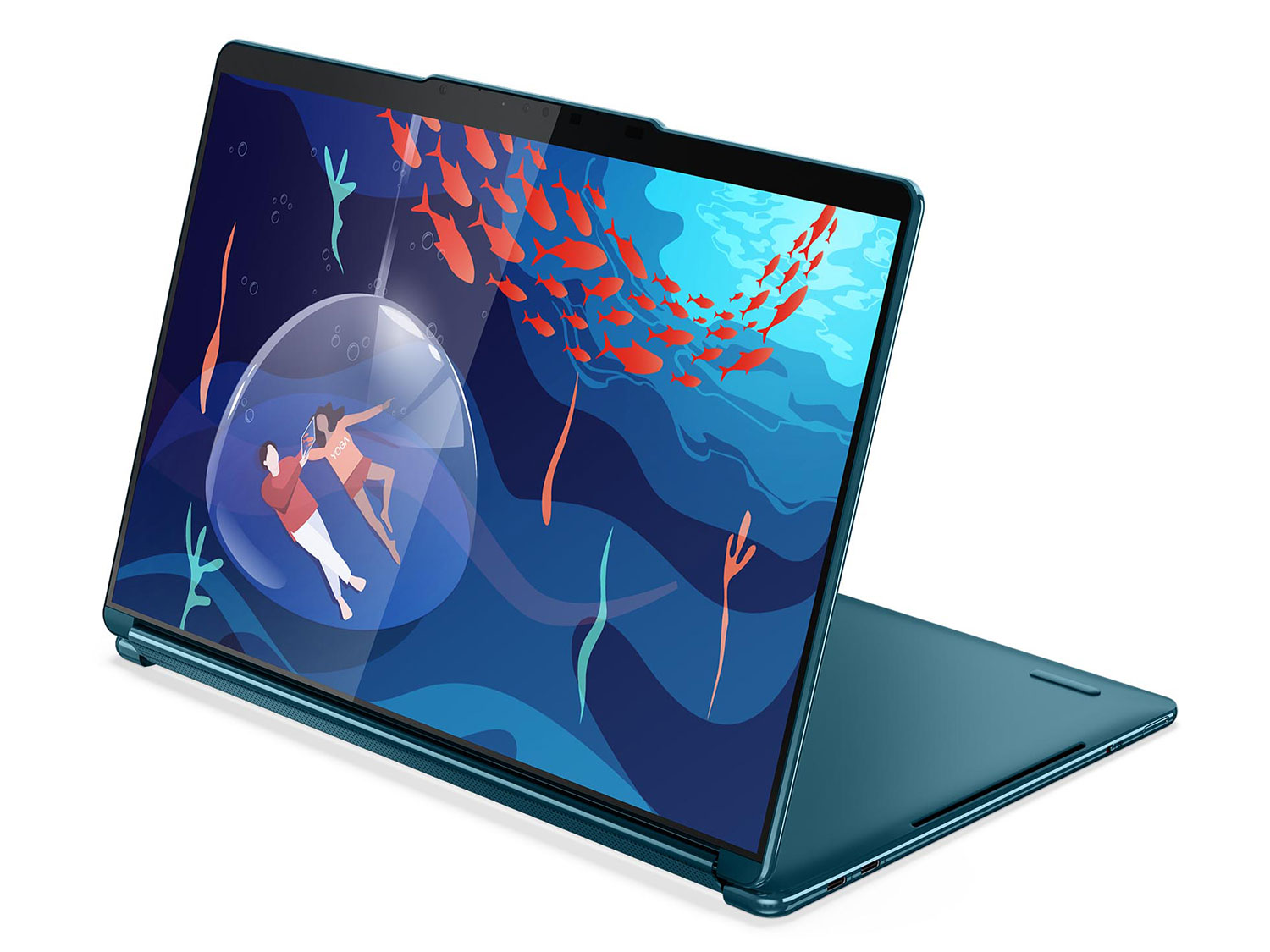
Three USB-C ports support Thunderbolt 4, giving you access to a wide array of ultrafast docking and storage. I tend to use a TB4 travel dock with a multi-card reader, USB-A ports, Ethernet, etc.
The YogaBook 9i is a fascinating laptop evolution and one of the best things we’ve seen at CES 2023. We’ll have to wait until it becomes available, probably in late October or November 2023.
Filed in . Read more about CES, CES 2023, Dual-screen, Editorspick, Laptops, Lenovo and Lenovo Laptops.


























